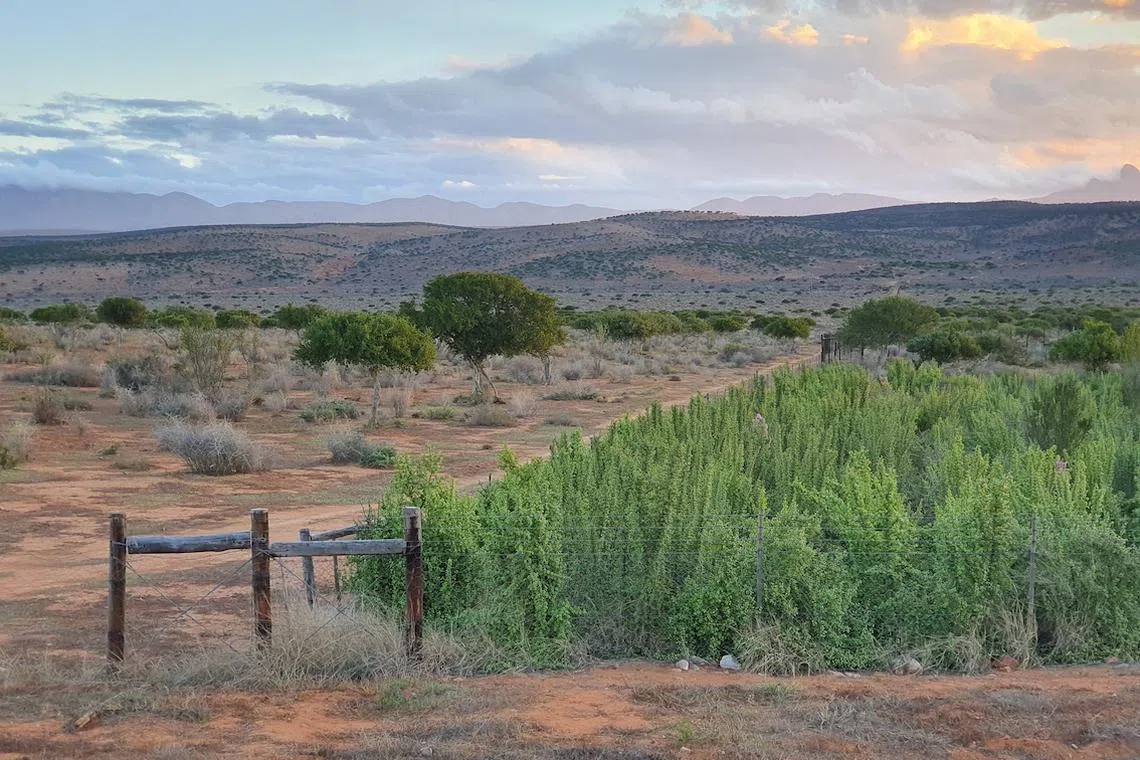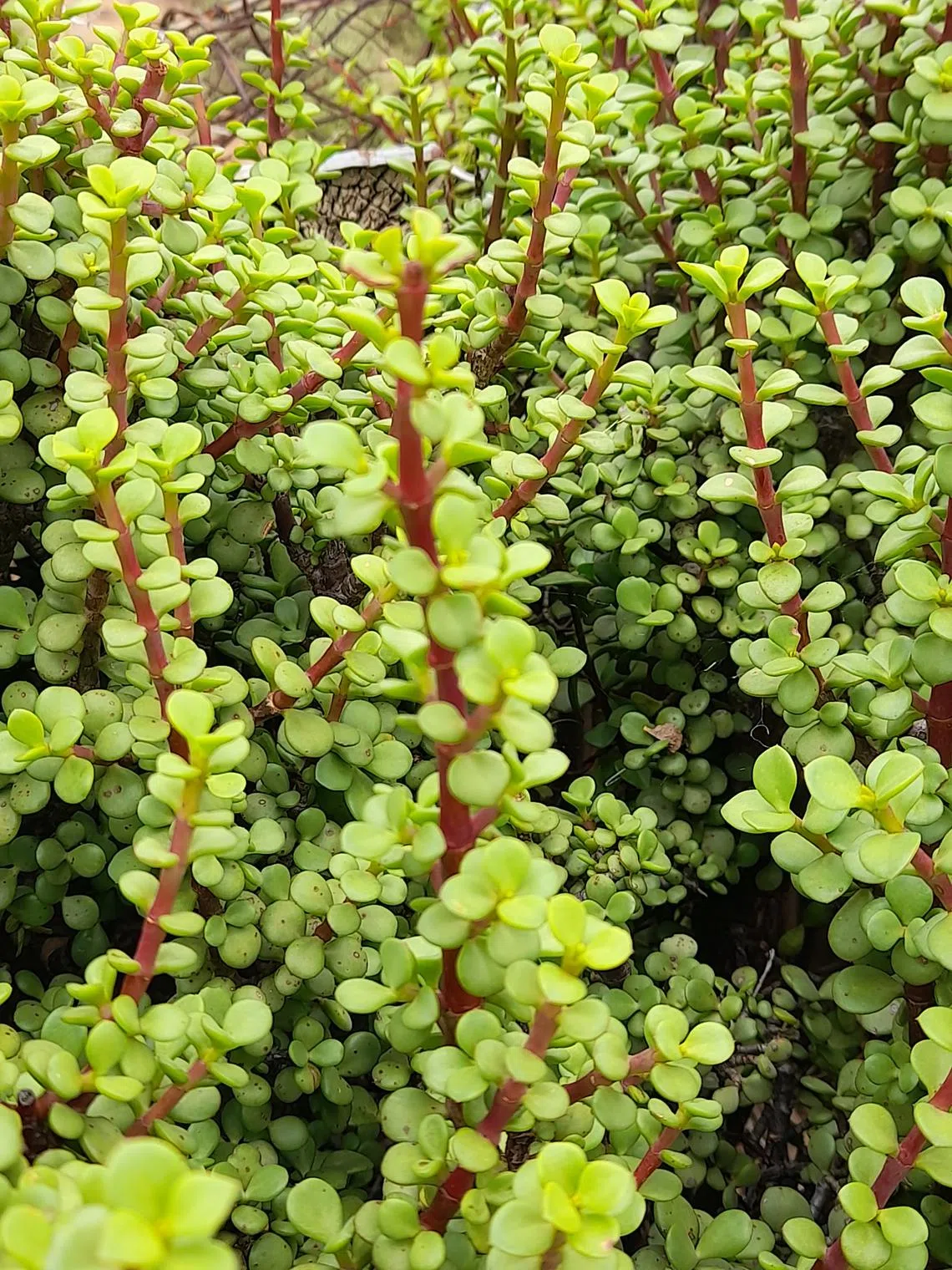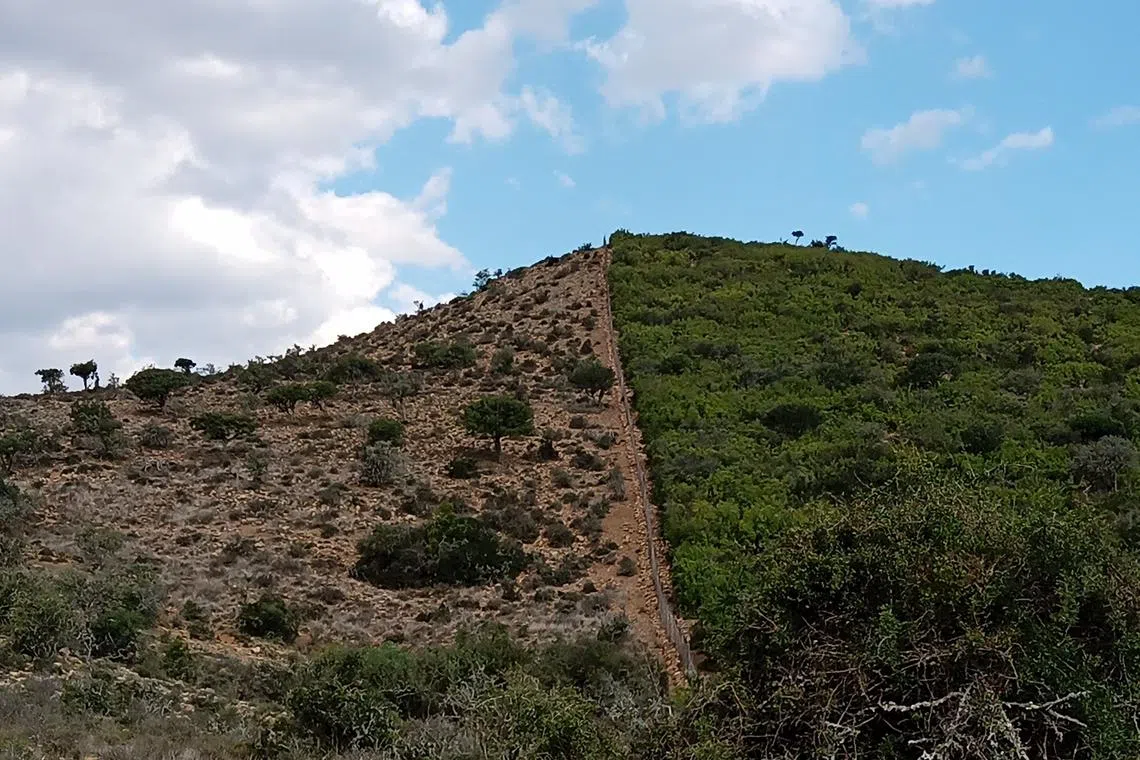S’pore firms to restore 100,000ha of degraded S. Africa land with carbon-absorbing shrubs
Sign up now: Get ST's newsletters delivered to your inbox

A trial plot of spekboom plants, which help absorb carbon dioxide, in South Africa.
PHOTO: IMPERATIVE GLOBAL
Follow topic:
SINGAPORE – Imperative Global, a Singapore-headquartered developer of carbon credit projects, is leading an initiative to restore a native succulent over 100,000ha of land in South Africa to absorb carbon dioxide from the atmosphere.
On May 28, Temasek-backed investment platform GenZero and two overseas investment companies announced that they are funding the first phase of the project, which will cover the replanting of the native tree-like succulent, called spekboom, over 10,000ha of the South African shrublands.
That land area is more than thrice the size of the Central Catchment Nature Reserve, Singapore’s largest nature reserve.
In the past, up to 5 million ha of the Eastern Cape were covered by dense shrublands dominated by spekboom, which absorbs carbon dioxide from the atmosphere faster than most other trees in arid conditions, and is a favourite staple of elephants.
The succulent is identified by its thick, round leaves and reddish stems. In full bloom, soft pink flowers crown the vegetation.
But decades of farming and excessive grazing by cattle and goats have heavily degraded the lands of the Eastern and Western Cape provinces of South Africa into a desert-like state. As at 2013, almost 80 per cent of dense vegetation was lost to overgrazing.
The first 10,000ha is expected to be replanted by 2025, and Imperative Global aims to have the 100,000ha filled by 2030, said its chief executive Scobie Mackay.
When the succulent shrublands are restored, soil erosion will be prevented, while the earth will absorb water better. Such ecosystem functions will facilitate the return of small mammals and invertebrates, said Ms Hoon Ling Min, GenZero’s investment director.

The carbon-absorbing succulents are identified by their thick, round leaves and reddish stems.
Imperative Global
The entire 100,000ha project is estimated to remove more than 30 million tonnes of carbon dioxide – which is equal to the greenhouse gas emissions of 10 million to 15 million cars – over 40 years.
It can thus be a source of carbon credits for companies to offset their greenhouse gas emissions.
In a joint statement, the investors and Imperative Global said: “Carbon removal credits from the project... are in demand in the international voluntary carbon market but can also be delivered into the domestic South African carbon tax scheme.” The funding given for the project was not disclosed.
The first of these credits are expected to be issued between 2027 and 2028, said Mr Mackay.
However, Singapore companies may not be able to use the carbon credits from the South Africa project to offset part of their carbon tax.
This is because South Africa and the Republic have not indicated an intent to collaborate on carbon markets, where carbon credit projects are held to higher standards and aligned with Article 6 of the Paris Agreement.
As at May, Singapore has inked legally binding carbon credit agreements with two countries – Papua New Guinea in end-2023 Ghana on May 27.
GenZero has also been investing in a forest restoration project in the Kwahu region of Ghana.
The Republic has also concluded negotiations on similar carbon credit pacts
The 100,000ha spekboom project in South Africa comes amid a growing call from the United Nations for the private sector to get involved in nature conservation, previously the domain of philanthropies and governments.
The UN Global Biodiversity Framework estimates a biodiversity finance gap of US$700 billion ($943 billion) a year between now and 2030. The framework, which was formed in end-2022, also laid out the mammoth target of protecting 30 per cent of the world’s lands and oceans by 2030.
At the next UN biodiversity conference in Colombia in October, governments are expected to focus on implementation – to share the progress of their plans and explore new ways to make nature a priority.

A picture of a hill in South Africa showing the state of the land before the replanting of spekboom (left), and verdant spekboom covering part of the hill (right).
PHOTO: IMPERATIVE GLOBAL
Commenting on the South Africa project, a spokesman for the South-east Asia Climate and Nature-based Solutions Coalition said carbon markets are key in directing carbon finance towards climate mitigation and the conservation of biodiversity and critical habitats in regions such as Africa and South-east Asia.
“Carbon markets have been particularly effective at deploying private capital to reduce harmful emissions through forest conservation, directly benefiting local actors on the ground,” said the spokesman, adding that private capital has to play a bigger role.
The project in South Africa will create 1,000 jobs for the Eastern and Western Cape provinces, with the former having reported a 40 per cent chronic unemployment rate.
GenZero’s Hoon said employment opportunities will be created across all parts of the project, from manning the nursery to harvesting, watering and manual planting.


